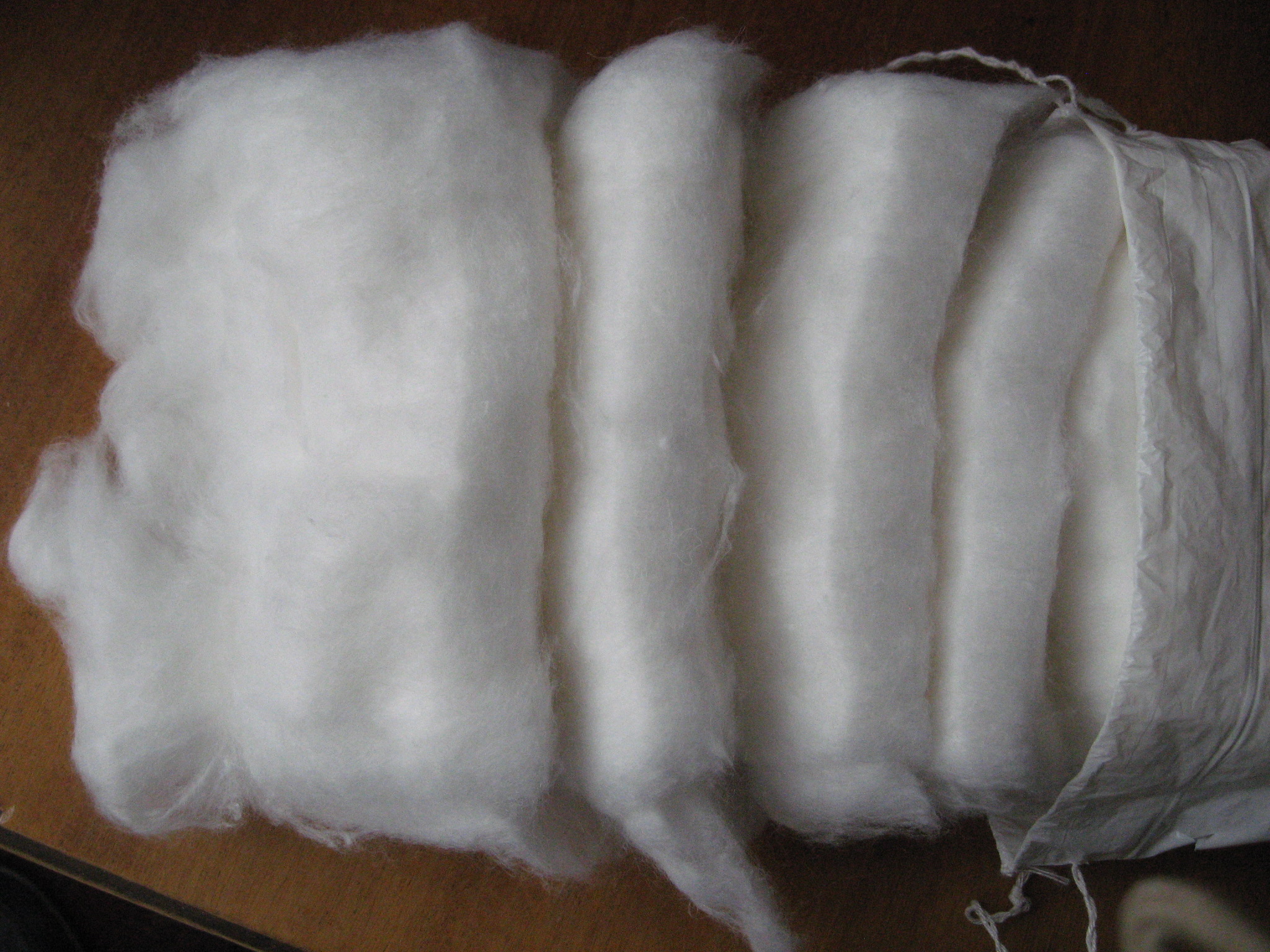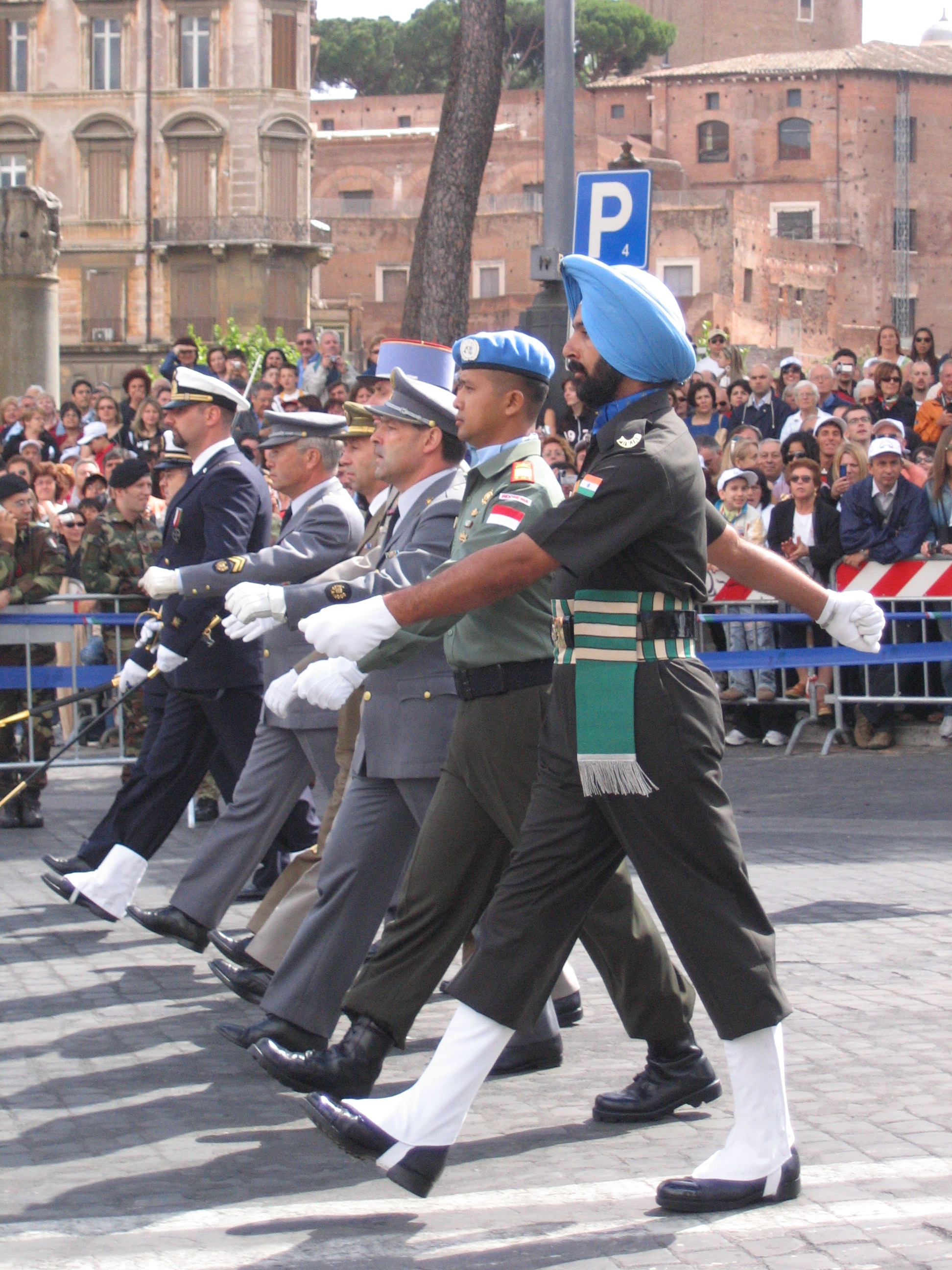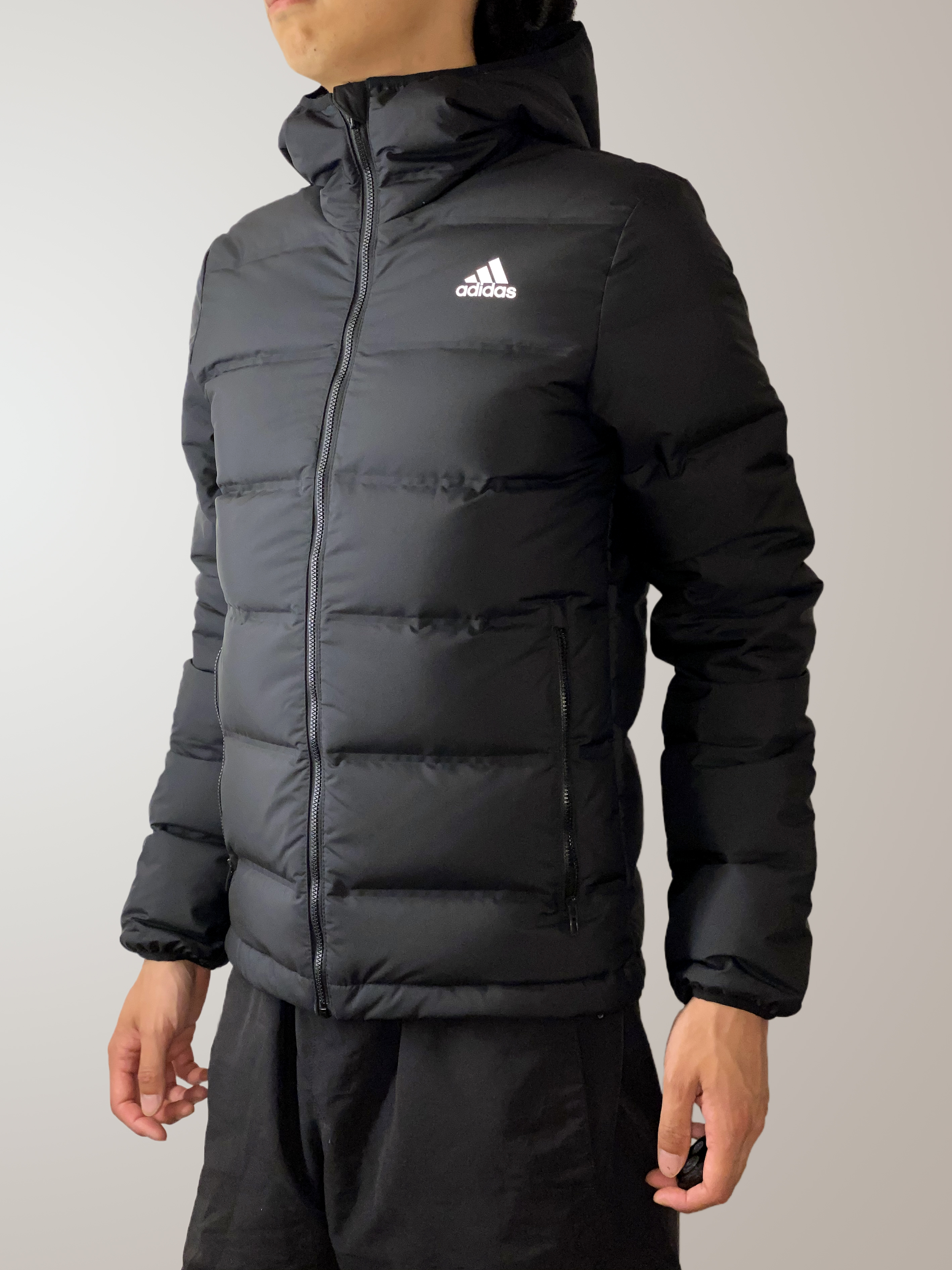|
Telogreika
The telogreika (russian: телогре́йка, lit=body warmer, ) or vatnik ( rus, ватник, p=ˈvatnʲɪk) is a variety of Russian warm cotton wool-padded jacket. It was also a part of the winter uniform first issued by the Red Army during World War II. Telogreikas continued to be issued until the late 1960s. Variations The earlier 1935 vatniks resembled a modern wool jacket in shape and cut. Issued extensively from 1935 to 1941, with a simplified version from 1941 onwards. The basic cut the uniform followed was that of a quilted jacket and quilted trousers. The trousers had a button fly and were tied at the bottom of the legs. There were usually pockets on the hips of the trousers and a button pocket on the front of the trouser leg. Telogreika jackets buttoned up the front, and the jacket sleeves buttoned closed. Early issue variants had high collars, though these were absent later on. Telogreika jackets usually had a single pocket on the front of the jacket. The ... [...More Info...] [...Related Items...] OR: [Wikipedia] [Google] [Baidu] |
Afghanka
The Afghanka (russian: Афганка) (proper designation: M88) is a type of military uniform system developed and issued by the Soviet Army in the early 1980s, still in use today in some Post-Soviet states in many different variants. The name ''Afghanka'' is an unofficial popular slang term in Russian for the uniform, derived from its prolific use during the Soviet–Afghan War. All the non-sand coloured versions of the M88 are not called Afghanka. They are typically made of cotton ( or "Х/б", "cotton paper"). Design details The Afghanka field uniform is made in a lightweight summer and heavier, lined winter version; both consist of a long, loose fitting 6-pocket BDU-style jacket with large stand-and-fall collar, epaulettes, concealed buttons, armpit vents, and tube-style field trousers with cargo pouches on the thighs. A field cap made from sturdier cotton and featuring ear flaps which could be unbuttoned and lowered to protect the ears was supplied with the uniform.Camoufl ... [...More Info...] [...Related Items...] OR: [Wikipedia] [Google] [Baidu] |
Valenki
Valenki ( rus, ва́ленки, p=ˈvalʲɪnkʲɪ; sg valenok ( rus, ва́ленок, p=ˈvalʲɪnək)) are traditional Russian winter footwear, essentially felt boots: the name ''valenok'' literally means "made by felting". They are not water-resistant, and are often worn with galoshes to protect the soles from wear and moisture. Description Valenki are usually worn for walking on dry snow in frosty weather. In order to prevent wear, the boots are often soled with leather, rubber or another durable material or worn with galoshes. Traditionally, valenki come in brown, black, gray and white, however, modern versions are often dyed or produced from colored artificial materials. The use of felted footwear has been known for millennia, felt shoes have been found in Iron Age Siberian burials. The origin of valenki has been speculated to trace back to the traditional felt boots worn by nomads of the Great Steppe (including Southern Rus'). The first modern valenki appeared in t ... [...More Info...] [...Related Items...] OR: [Wikipedia] [Google] [Baidu] |
Ushanka
An ushanka ( rus, уша́нка, p=ʊˈʂankə, from , "ears"), also called an ''ushanka-hat'' ( rus, ша́пка-уша́нка, p=ˈʂapkə ʊˈʂankə), is a Russian fur cap with ear-covering flaps that can be tied up to the crown of the cap, or fastened at the chin to protect the ears, jaw, and lower chin from the cold. An alternative is to bend the flaps back and tie them behind the head, which is called "ski-style" — this offers less protection from the elements, but much better visibility, essential for high-speed skiing. The dense fur also offers some protection against blunt impacts to the head. They are also traditionally worn in the Baltic region including Sweden and Finland and the whole eastern European region. The word derives from (), "ears" in Russian and many Slavic languages. Basic materials Ushankas are often made from inexpensive sheepskin (''tsigeyka''), rabbit or muskrat fur. Artificial fur hats are also manufactured and are referred to as "fish fur ... [...More Info...] [...Related Items...] OR: [Wikipedia] [Google] [Baidu] |
Cotton Wool
Cotton wool consists of silky fibers taken from cotton plants in their raw state. Impurities, such as seeds, are removed and the cotton is then bleached using hydrogen peroxide or sodium hypochlorite and sterilized. It is also a refined product (''absorbent cotton'' in U.S. usage) which has medical, cosmetic and many other practical uses. The first medical use of cotton wool was by Dr Joseph Sampson Gamgee at the Queen's Hospital (later the General Hospital) in Birmingham, England. References * ''Absorbent and medicated surgical dressings'', J. S. Gamgee, in The Lancet, London London is the capital and List of urban areas in the United Kingdom, largest city of England and the United Kingdom, with a population of just under 9 million. It stands on the River Thames in south-east England at the head of a estuary dow ..., 24 January 1880 {{med-stub Cotton ... [...More Info...] [...Related Items...] OR: [Wikipedia] [Google] [Baidu] |
Military Uniforms
A military uniform is a standardised dress worn by members of the armed forces and paramilitaries of various nations. Military dress and styles have gone through significant changes over the centuries, from colourful and elaborate, ornamented clothing until the 19th century, to utilitarian camouflage uniforms for field and battle purposes from World War I (1914–1918) on. Military uniforms in the form of standardised and distinctive dress, intended for identification and display, are typically a sign of organised military forces equipped by a central authority. Military uniforms differ not only according to military units but tend to also be offered in different levels of formality in accordance with Western dress codes: full dress uniform for formal wear, mess dress uniform for semi-formal wear, service dress uniform for informal wear, and combat uniform (also called "battle/field dress") which would equal casual wear. Sometimes added to the casual wear category is physical tr ... [...More Info...] [...Related Items...] OR: [Wikipedia] [Google] [Baidu] |
Jackets
A jacket is a garment for the upper body, usually extending below the hips. A jacket typically has sleeves, and fastens in the front or slightly on the side. A jacket is generally lighter, tighter-fitting, and less insulating than a coat, which is outerwear. Some jackets are fashionable, while others serve as protective clothing. Jackets without sleeves are vests. Etymology The word ''jacket'' comes from the French word ''jaquette''. The term comes from the Middle French noun ''jaquet'', which refers to a small or lightweight tunic. In Modern French, ''jaquette'' is synonymous with ''jacket''. Speakers of American English sometimes informally use the words ''jacket'' and ''coat'' interchangeably. The word is cognate with Spanish ''jaco'' and Italian ''giacca'' or ''giacchetta'', first recorded around 1350s. It is ultimately loaned from Arabic ''shakk (شكّ)'', which in turn loaned from Aramean/Assyrian and Hebrew ''shaḳḳ (שַׁקּ)''. Nylon bomber jacket, also in leath ... [...More Info...] [...Related Items...] OR: [Wikipedia] [Google] [Baidu] |
Construction Worker
A construction worker is a worker employed in the physical construction of the built environment and its infrastructure. Definition By some definitions, workers may be engaged in manual labour as unskilled or semi-skilled workers; they may be skilled tradespeople; or they may be supervisory or managerial personnel. Under safety legislation in the United Kingdom, for example, construction workers are defined as people "who work for or under the control of a contractor on a construction site"; in Canada, this can include people whose work includes ensuring conformance with building codes and regulations, and those who supervise other workers. The term is a broad and generic one and most construction workers are primarily described by the specific level and type of work they perform. Laborers comprise a large grouping in most national construction industries. In the United States, for example, in May 2021 the construction sector employed just over 7.5 million people, of whom just ov ... [...More Info...] [...Related Items...] OR: [Wikipedia] [Google] [Baidu] |
Watchman (law Enforcement)
Watchmen were organised groups of men, usually authorised by a state, government, city, or society, to deter criminal activity and provide law enforcement as well as traditionally perform the services of public safety, fire watch, crime prevention, crime detection, and recovery of stolen goods. Watchmen have existed since earliest recorded times in various guises throughout the world and were generally succeeded by the emergence of formally organised professional policing. Early origins An early reference to a watch can be found in the Bible where the Prophet Ezekiel states that it was the duty of the watch to blow the horn and sound the alarm. (Ezekiel 33:1-6) The Roman Empire made use of the Praetorian Guard and the Vigiles, literally the watch. Watchmen in England The problem of the night The streets in London were dark and had a shortage of and poor quality artificial light. It had been recognised for centuries that the coming of darkness to the unlit streets of a t ... [...More Info...] [...Related Items...] OR: [Wikipedia] [Google] [Baidu] |
Eastern Bloc
The Eastern Bloc, also known as the Communist Bloc and the Soviet Bloc, was the group of socialist states of Central and Eastern Europe, East Asia, Southeast Asia, Africa, and Latin America under the influence of the Soviet Union that existed during the Cold War (1947–1991). These states followed the ideology of Marxism–Leninism, in opposition to the Capitalism, capitalist Western Bloc. The Eastern Bloc was often called the Second World, whereas the term "First World" referred to the Western Bloc and "Third World" referred to the Non-Aligned Movement, non-aligned countries that were mainly in Africa, Asia, and Latin America but notably also included former Tito–Stalin split, pre-1948 Soviet ally SFR Yugoslavia, which was located in Europe. In Western Europe, the term Eastern Bloc generally referred to the USSR and Central and Eastern European countries in the Comecon (East Germany, Polish People's Republic, Poland, Czechoslovak Socialist Republic, Czechoslovakia, Hungarian ... [...More Info...] [...Related Items...] OR: [Wikipedia] [Google] [Baidu] |
Soviet Army
uk, Радянська армія , image = File:Communist star with golden border and red rims.svg , alt = , caption = Emblem of the Soviet Army , start_date = 25 February 1946 , country = (1946–1991)' (1991–1992) , branch = , type = Army , role = Ground warfare, Land warfare , size = 3,668,075 active (1991) 4,129,506 reserve (1991) , command_structure = , garrison = , garrison_label = , nickname = "Red Army" , patron = , motto = ''За нашу Советскую Родину!(Za nashu Sovetskuyu Rodinu!)''"For our Soviet Motherland!" , colors = Red and yellow , colors_label = , march ... [...More Info...] [...Related Items...] OR: [Wikipedia] [Google] [Baidu] |
Pea Coat
A pea coat (or peacoat, pea jacket, pilot jacket, reefer jacket) is an outer coat, generally of a Navy blue, navy-coloured heavy wool, originally worn by sailors of European and later American navy, navies. Pea coats are characterized by short length, broad Jacket lapel, lapels, double-breasted fronts, often large wooden, metal or plastic buttons, three or four in two rows, and vertical or slash pockets. References to the pea jacket appear in American newspapers at least as early as the 1720s, and modern renditions still maintain the original design and composition. A "bridge coat" is a pea coat that extends to the thighs, and is a uniform exclusively for Officer (armed forces), officers and chief petty officers. The reefer jacket is for officers and chief petty officers only, and is identical to the basic design, but usually has gold buttons and epaulettes. Only officers wear the epaulettes. Etymology According to a 1975 edition of ''The Mariner's Mirror'', the term "pea coat" o ... [...More Info...] [...Related Items...] OR: [Wikipedia] [Google] [Baidu] |
Greatcoat
A greatcoat, also known as a watchcoat, is a large overcoat that is typically made of wool designed for warmth and protection against the weather. Its collar and cuffs can be turned out to protect the face and hands from cold and rain, and the short cape around the shoulders provides extra warmth and repels rainwater. During the 17th and 18th centuries and the Industrial Revolution, greatcoats became available for all social classes. It was popular in the 19th century as a military uniform and casual wear for the wealthy, and is still issued for inclement weather by many armed forces around the world. The coat generally hangs down below the knees and the cape is kept short, normally just above or below the elbows. It also sports deep pockets for keeping letters and food dry. It is typically coloured grey, though other colours may be used (e.g. black, brown, navy blue). One type of greatcoat is the Petersham (named after Viscount Petersham). In Regency fashion, a greatcoat wou ... [...More Info...] [...Related Items...] OR: [Wikipedia] [Google] [Baidu] |


.jpg)





